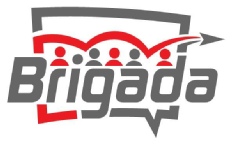This Sunday night, we wrap up a ten-week course on disciple-making movement (DMM) strategies. Participants will have invested 20 hours learning a) to become a disciple worth multiplying, b) to start and facilitate multiplying groups, and c) to facilitate three-thirds style discovery Bible studies and accountability groups. We’ve averaged 25 people per session. (Click “Read More” to discover how it worked.)
First, the Zume platform has really matured well. Talk about a Learning Management System! The cool thing about Zume is – the visionaries, along with all the programmers and developers, realized that they were developing a custom learning management platform designed from the ground up to integrate well with tracking multiplying groups. Having just done a thorough examination of 200 learning management systems (LMSes), we can now assure you with confidence — there’s nothing quite like it [for any price, let alone free of charge for disciple-makers] on the entire market!
Second, we can now tell you that, in some ways (granted, not EVERY way), the online platform (i.e., Zoom and other tools like it with virtual break-out rooms) works just as well as live, in-person trainings. Sending people to breakout rooms in Zoom (and other similar tools) is instant. They can also develop just as quickly the group-care element that we see with in-person gatherings. Participants who are hearing-challenged can easily listen to 25 people share their best take-away in a matter of 7 minutes. We did it Sunday night. We were amazed. In just seven minutes, we heard from all 25 people — and each person’s voice was clear as a bell. In a live, in-person gathering, there would be people in the room who would have had lots of trouble hearing clearly each of the 25 people. Passing a mic increases the awkwardness and formality of the training in a weird and artificial way. On Zoom (and other such tools), that awkwardness goes away because we become accustomed to the “room.”
Third, when using Zume for training, the guided curriculum reduces TREMENDOUSLY the amount of talking that a trainer has to do. This helps AMAZINGLY reduce the fatigue factor that we hear people experiencing in Zoom-type conversations. Our participants have LOVED getting together on Zoom. We think one of the key reasons is because no one person has had to talk more than three or four minutes at a time.
The final measure: On Sunday night, those 25 people committed to launching 18 new groups during the next few weeks. Our co-facilitator (who is great at follow-through) has most excellent plans at coaching, encouraging, and mentoring them through this process. Imagine if our one group could multiply into 18. Would you call that “not bad” for an online training outcome? In fact, if we manage to multiply even 1/3 of that many groups, it would STILL be a remarkable achievement — thank you Lord.
Zume via Zoom (and other such tools) can work.













I was hoping this article would answer the question if onine DMM really worked. I only saw how they did training online. I’d like to know if there are groups starting and if those groups are reproducing. Please provide a follow-up article to answer whether DMM online via video conferencing works.
HI Will. I don’t know of any statistical survey yet – but anecdotally, it appears that it can be just as engaging. Given enough pandemic time, I’m sure such studies will emerge.